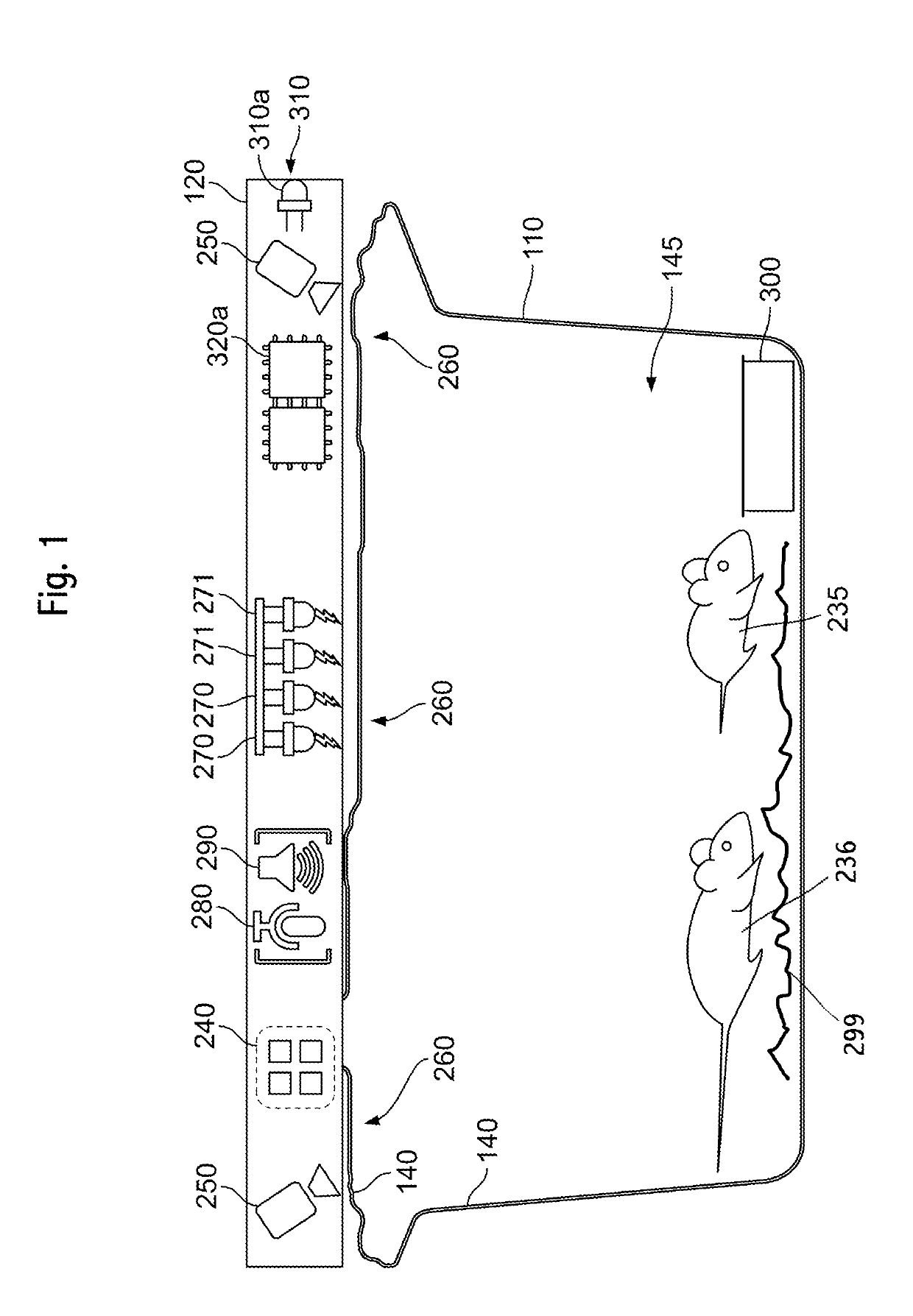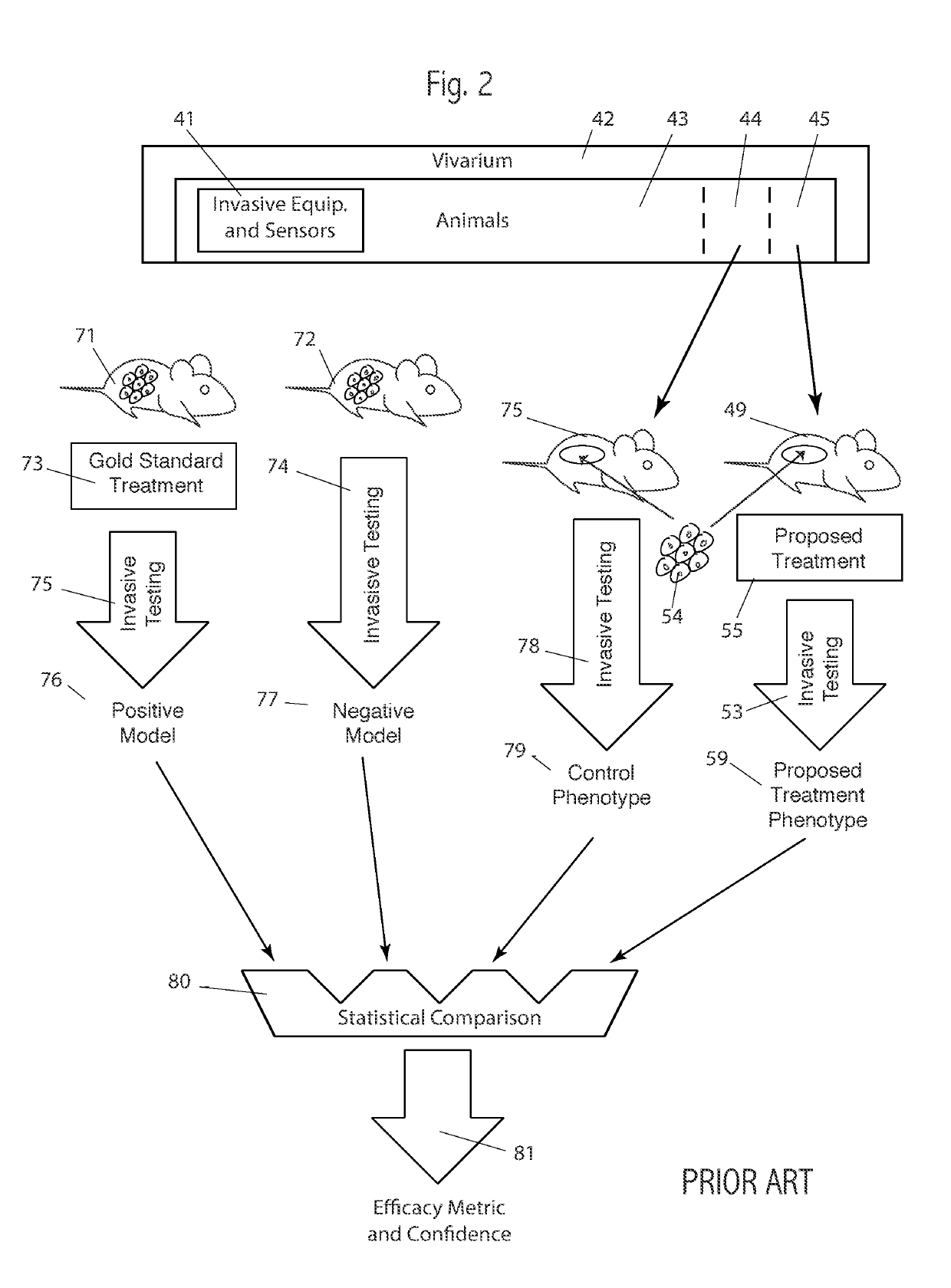System and method of measured drug efficacy using non-invasive testing
a non-invasive testing and drug efficacy technology, applied in the field of automated behavioral monitoring of animals, can solve problems such as invasive disease induction or treatmen
- Summary
- Abstract
- Description
- Claims
- Application Information
AI Technical Summary
Benefits of technology
Problems solved by technology
Method used
Image
Examples
Embodiment Construction
[0017]Embodiments, scenarios, examples and drawings are non-limiting.
[0018]Vivariums house a number of animals, typically test or study animals, such as mice, in a number of cages, often thousands of cages. The study animals are frequently used to test drugs, genetics, animal strains or clones, husbandry experiments, methods of treatment, procedures, diagnostics, and the like. We refer to all such uses of a vivarium as a study.
[0019]In order to study a new treatment, baseline data is required. Such data typically includes data for two sets of animals: a positive group comprising animals with a known disease treated with a known, “gold standard” treatment; and a negative group comprising animals with the known disease and no treatment. Baseline data may include a healthy group comprising similar animals without the disease. Note that a “disease” may be induced, occur spontaneously, or be built into the genetics of the animal.
[0020]During the test, typically two sets of animals are us...
PUM
 Login to View More
Login to View More Abstract
Description
Claims
Application Information
 Login to View More
Login to View More - R&D
- Intellectual Property
- Life Sciences
- Materials
- Tech Scout
- Unparalleled Data Quality
- Higher Quality Content
- 60% Fewer Hallucinations
Browse by: Latest US Patents, China's latest patents, Technical Efficacy Thesaurus, Application Domain, Technology Topic, Popular Technical Reports.
© 2025 PatSnap. All rights reserved.Legal|Privacy policy|Modern Slavery Act Transparency Statement|Sitemap|About US| Contact US: help@patsnap.com



